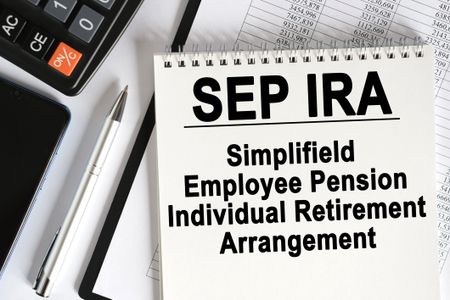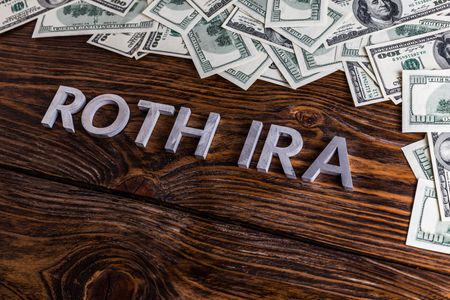Ask the Editors: Real-Life Retirement Questions and Guidance
Kiplinger editors provide answers to readers' real-life retirement-funding challenges, such as converting to a Roth IRA, boosting Social Security benefits, and assessing pension payouts.
In its March 2010 cover story, Kiplinger’s Personal Finance tackled real-life questions on the minds of many of our readers these days. Extending our mission of personal service, we invited readers to send us more questions to be answered in this exclusive online companion package.
Investing in Retirement
My wife and I retired in 2007. Our retirement accounts survived the “Great Recession” because I had invested 85% of our money in the Vanguard Total Bond Market index fund, and split the rest between the Vanguard Total International Stock Market index fund and the Vanguard Total Stock Market index fund. My question is this: How should we invest for the future? We are drawing down about 4% annually. I am concerned about future inflation and rising interest rates, and we cannot afford to lose this money.
The good news is that you chose just the right time to be overly conservative with your money. The bad news is that you probably need to be more aggressive if you want to meet your goals for income and inflation protection.

Sign up for Kiplinger’s Free E-Newsletters
Profit and prosper with the best of expert advice on investing, taxes, retirement, personal finance and more - straight to your e-mail.
Profit and prosper with the best of expert advice - straight to your e-mail.
Since you like working with Vanguard’s funds, you might take a look at Vanguard Managed Payout Growth and Distribution (symbol VPGDX). It’s one in a line of three funds Vanguard recently launched designed to turn a nest egg into a steady income stream. The fund aims to pay out 5% per year in monthly distributions, without depleting principal, and it shoots to keep up with inflation. The fund invests in a mix of the Vanguard index funds that you’re already comfortable with, but adds in commodities, real estate investment trusts and Treasury inflation-protection securities for extra inflation protection. At 0.46%, expenses are very reasonable.
The fund scores high relative to your needs for income, diversification, low costs and inflation protection. But it isn’t a guaranteed product like an annuity, and it holds a much higher stake in stocks -- currently 64% -- than you’re used to.
Emergency Funds in Retirement
I am a retiree with a pension and Social Security. How many months of emergency money do I need?
Those who are still working should have at least six months’ worth of expenses socked away. (See the article How Much Cash You Really Need.) Retirees are a different story. If you’re retired, you should have at least two or three years’ worth of expenses on hand. To get started, tally up your monthly bills. Then, subtract out what your Social Security and pension payments will cover. What’s left are your “uncovered expenses.” Figure out what two or three years’ worth of your uncovered expenses comes to, and build up your savings to that level. Having a big buffer will protect you in a bear market. Why? If you have a stash of cash and the market tanks, you won’t have to sell deflated assets to pay your bills.
The Roth Five-Year Rule
Since 2010 is the year where people that were ineligible to contribute to Roth IRAs can take advantage of converting from a traditional IRA and, of course, pay the tax, would you explain two things, please: How the tax is calculated, and what the five-year rule is?
Anyone can convert some or all of a traditional IRA to a Roth IRA beginning in 2010. (See our special report full of guidance on Roth IRA conversions.) If your IRA consists only of deductible pre-tax contributions and earnings, then any amount you convert to a Roth is taxed at your ordinary income tax rate. If your IRAs consist of both deductible and nondeductible contributions, then any amount you convert to a Roth is done on a pro rata basis reflecting the ratio of your taxable and nontaxable amounts you convert. Say all of your IRAs total $100,000, and say $20,000 of that came from nondeductible contributions. Then 20% of any amount you convert to a Roth IRA will be tax-free, and the rest will be taxable at your ordinary income tax rate.
If you are younger than 59 ½, you must wait five years from the day of conversion before you can access your converted amounts penalty-free. If you are older than 59 ½, the five-year rule on converted amounts doesn’t apply, but you still have to wait five years before you can tap earnings tax-free and penalty-free. Each conversion starts a new five-year holding period.
IRA Contribution Rules
My tax accountant told me that I cannot contribute to a traditional IRA because I am covered by a retirement plan at work. Is this true?
You’ve been misinformed. You can always contribute to a traditional IRA; you just may not be able to deduct your IRA contribution from your income taxes. Because you are covered by a retirement plan at work, you can’t deduct your contribution to a traditional IRA if you are single and your income is more than $66,000 or if you are married and your joint income is more than $109,000.
If you can’t deduct your IRA contribution, you would be better off contributing to a Roth IRA, if you are eligible. To contribute to a Roth in 2010, your income can’t exceed $120,000 if you are single or $177,000 if you are married filing jointly.
If your income is too high to contribute to a Roth IRA, don’t despair. Now that the former $100,000 income-eligibility limit on Roth IRA conversions has disappeared, you can make a non-deductible contribution to a traditional IRA and immediately convert to a Roth IRA tax-free.
Which Accounts to Fund First?
I am 56 years old and work for a major railroad as a locomotive engineer. My company offers a 401(k) plan, but doesn’t match employee contributions. I used to contribute 20% of my pre-tax income, but I’ve been told that without a match I should instead fully fund my Roth IRA first and then put money into the 401(k). Is this good advice?
Although your company does not match any contributions you make to your 401(k), you do get the benefit of lowering your adjusted gross income dollar-for-dollar for any amount you contribute to your retirement account. However, all the money you withdraw from your 401(k) in retirement will be fully taxed at your ordinary income tax rate.
If you like the idea of tax-free income in retirement, you may want to direct the first $6,000 of your retirement savings to a Roth IRA (you get the benefit of the extra $1,000 in catch-up contributions because you are older than 50) and then direct the rest of your contributions to your company 401(k) plan. You can contribute up to $22,000 to your 401(k) in 2010, more than the $16,500 contribution limit for someone under 50 years old.
Pension Payouts
I am 60 years old, and when I retire I will receive benefits from three different pension plans, each with many options to choose from. Question: How do I know that the dollar figures quoted by the plans are correct? In other words, if I am told that I will be receiving $250 a month, how do I know if it should really be $280 per month? Is there a company that will review the numbers to make sure they’re correct?
You can hire a private actuary to review your pension payouts. But first check with PensionHelp America, a network of non-profit organizations, government agencies and private professionals dedicated to providing pension information and assistance to workers, retirees and their families. The organization can refer you to local resources.
Early Distributions
Could you please explain the rules that allow you to take distributions from either a 401(k) plan or a traditional IRA if you retire prior to age 55? What would happen if I returned to work at some point?
Normally, if you take distributions from an IRA or 401(k) before age 59 1/2, you pay a 10% early-withdrawal penalty on top of your usual state and federal taxes on any amount withdrawn. However, there is an exception for 401(k) and similar employer-based retirement plans. You can avoid the 10% penalty if you are at least 55 years old when you leave your job, but you'll still owe taxes on the distributions.
One way to avoid the early-withdrawal penalty on IRA distributions before age 59 1/2 is to take a 72(t) distribution. That requires "substantially equal periodic payments" from your IRA for at least five years or at least until age 59 1/2, whichever is longer. (Check out www.72t.net for details.) If you deviate from the 72(t) schedule, you will owe a penalty retroactively to your first distribution.
IRAs and Charitable Contributions
What are the prospects for reinstatement of the IRA charitable contributions rule that expired at the end of 2009?
Chances are good that Congress may reinstate the provision that allows IRA owners who are age 70 1/2 and older to direct some or all of their required minimum distributions (up to $100,000) directly to a charity in 2010, allowing them to exclude the contribution from their taxable income. Congress must deal with numerous expiring tax rules this year, and this one could be included in the final bill. However, don't make a move until it's official.
Converting to a Roth
I am 62 and retired early. I have $300,000 in a traditional IRA and $200,000 in a Roth IRA. I do not anticipate having to take any funds from these IRAs in the next ten years. Is there any reason I wouldn't want to convert the rest of the regular IRA to a Roth?
The longer you can leave the money untouched in a Roth IRA to grow tax-free, the more sense it makes to convert to a Roth IRA now. That assumes you have the money to pay the tax bill, preferably from funds outside your IRA. A conversion will substantially boost your taxable income, possibly increasing the portion of your Social Security benefits that are taxed. If you convert to a Roth in 2010, you can choose to pay all the tax on your 2010 tax return due April 15, 2011, or split the tax bill between your 2011 and 2012 returns. One caveat: We know what tax rates will be for 2010. We don’t know what they will be for 2011 and 2012 when current tax rates expire.
Taxes and Roth Conversions
Several years ago my husband and I each started after-tax IRAs with a plan to convert them to Roth IRAs in 2010. We thought this would be a good way to have some of our retirement money grow tax-free since we do not meet the income limits for investing directly in a Roth. Last week we called Vanguard to start the conversion process. We expected a simple procedure and no taxes, considering that the balances currently total less than the original investments and have no gains. Instead, we were told that only a percentage of the conversion would be treated that way because we own some rollover and other pre-tax IRAs from earlier years. The Vanguard representative explained that we would each have to figure the percentage of our total IRA funds that were untaxed and then pay taxes on that percentage even if we only converted the newest after-tax account. Our rollover accounts include years of 401(k) contributions and growth, so that would certainly minimize any tax advantage of converting the newer, smaller after-tax accounts. Is the information Vanguard gave us accurate?
Vanguard is correct. You can convert only a portion of your traditional IRA to a Roth IRA tax-free if your IRA contains both pre- and after-tax contributions. Over the past few years, Kiplinger’s has written extensively about this pro-rata rule regarding Roth IRA conversions. As we have said, the “back-door” funding of traditional IRAs with the intention of converting to a Roth IRA beginning in 2010 -- when the income limits on conversions disappeared -- works best if the ONLY contributions in your traditional IRA are after-tax.
But here’s a possible way out: Do you or your husband still have an employer-provided retirement plan, such as a 401(k), that accepts rollovers? If so, you can roll over your pre-tax contributions and earnings from your traditional IRA to your employer plan. Your IRA will be left holding only your after-tax contributions, which you can then convert to a Roth IRA tax-free.
If that’s not an option, you’ll have to follow the pro-rata rule on any amount that you convert to a Roth IRA. For example, if your traditional IRA is worth $100,000 and $20,000 came from after-tax contributions, then only one-fifth of any amount you convert to a Roth IRA would be tax-free. The remainder would be taxed at your regular income tax rates.
Should We Convert to a Roth?
I am 71, and my wife is 69. I receive a comfortable pension. Our mortgage was paid off decades ago, and we have no outstanding debt except for monthly credit-card bills, which we always pay promptly and in full. We also have significant diversified investments in mutual funds and in IRAs, plus long-term-care insurance policies. In our situation, is there any advantage to converting IRA funds to Roth IRAs?
It sounds like your finances are in tip-top shape. The only reason we could see for you to convert to a Roth IRA is if you want to leave a tax-free inheritance and if you have funds available outside of your traditional IRA to pay the tax on the conversion. Another advantage of a Roth IRA: You do not have to take mandatory distributions starting at age 70 ½ as you do with a traditional IRA. But, frankly, we think you should save the money for travel -- and let your kids or other heirs worry about the taxes. You’ve done quite enough!
Restarting Social Security
I am 62 and just started receiving Social Security. I have read in Kiplinger’s that when I reach full retirement age I can pay back the money I have received and reapply for the higher amount. I started my benefits early as I am not sure what the current administration is going to do about the shortfall that will happen with Social Security. I do not need Social Security benefits and am taking them just to be sure I’m grandfathered in if the rules change. Is this a logical thing to do?
Your plan to repay your Social Security benefits in the future and restart them at a higher level based on your older age at the time makes sense -- as long as Congress doesn’t change the rules between now and then. The strategy of taking Social Security benefits early and repaying them later amounts to an interest-free loan from Uncle Sam. If you are stashing your Social Security benefits in an interest-bearing account, you’ll come out ahead.
Social Security Benefits for Kids
I’m 64, my wife is 49 and we have a 13-year-old son. I’m employed and plan to work until at least age 68. It’s my understanding that I can draw my Social Security benefit at age 66, plus half of my benefit for my minor child until he is 19. Am I right in assuming that I can collect benefits for both myself and my minor son until he is no longer eligible, at which time I can stop my Social Security, pay back the money both he and I have received, without interest, and then start collecting benefits on my own again when I turn 70?
You are correct that, under current law, if you collect Social Security retirement benefits and you have a minor dependent child under age 18 (through age 19 if still in high school), your child is also eligible for benefits up to half of the amount you receive. You are also correct that under current law, you can suspend your benefits (by filing Form 521), repay all the benefits that both you AND any dependents have received, interest free, and then restart your benefits at a higher level based on your older age at the time. But we can’t guarantee that these rules won’t change in the future as Congress eventually tackles Social Security reform.
When to Apply for Benefits
I am 65 (born in 1945); I started taking my Social Security at 62. My husband is 1 1/2 years younger than I (born in 1946). He is still working and does not plan to take Social Security benefits until sometime after age 66. I called the 800 number for Social Security several months ago and was told that my husband could apply for a spousal benefit when he turned 65. I told the representative that I didn’t think my husband was eligible until full retirement age, which is 66 for my husband. Who is correct?
The normal retirement age for full Social Security benefits is 66 for anyone born from 1943 through 1954. So both you and your husband qualify for full retirement benefits at 66. You elected to receive benefits early at 62. As a result, your retirement benefits will be permanently reduced by 25% for the rest of your life. But if your husband dies first, and you are at least 66 at the time, you can collect full unreduced survivor benefits equal to 100% of what he collected during his lifetime. At that point, your own retirement benefits would disappear. (See Make the Most of a Survivor Benefit.)
If your husband waits until at least 66, he can collect his own retirement benefits and continue to work without affecting his payments. Or, once he is at least 66, he can claim “spousal benefits only,” collecting half of the amount you receive without affecting his own benefit. (See also Boost Your Social Security Benefits.) For example, if you collect $400 a month, he could collect $200 a month and could delay collecting his own benefit until age 70. At that point, it would be worth the maximum amount (an additional 8% a year for every year he delays collecting beyond his normal retirement age of 66).
Normally, you can apply for Social Security benefits online. But if you want to do something out of the ordinary, we suggest that you make an appointment at your local Social Security office to apply for benefits in person.
Annuities vs. Mortgage Payoffs
I am 63, and my wife is 55. I am hoping to retire in about two years; my wife plans to work until she’s about 62. We will both have some small pensions to supplement Social Security and our personal retirement funds.
I had considered purchasing immediate fixed annuities for about $200,000, about one-third of our current portfolio, to supplement this income.
My question is whether we would be smarter to pay off our mortgages instead. The first mortgage is about $200,000 at 5.5%, and the second is $25,000 at 6.6%, with about 24 years remaining on both. My rough calculations indicate the annuity payout would be slightly less than our total mortgage payments ($1,466 per month, principal and interest only).
I am concerned that, while the annuity would offer a better return than I might get on my own, I would give up control over those funds and basically have little access to them if an emergency arose. Paying off the mortgages would still allow us access to the money through a home-equity line of credit or even a reverse mortgage in the future. I also realize we would lose the deduction for mortgage interest by paying off the mortgages.
One of the biggest disadvantages of an annuity is, as you mentioned, the lack of control and access to the money. While there are more and more annuity products that do allow for some liquidity, interest rates are low, so this isn’t the best time to lock in a rate for 20 years or longer. The more pressing issue is whether you envision any trouble making those $1,400 mortgage payments after you are both retired and, more to the point, after one of you passes away and the survivor has to make do on less pension and Social Security income. If you feel uncomfortable parting with all $225,000 in cash to retire the mortgage, you may find it a worthwhile compromise to make additional principal payments and knock a few years off the term of the debt. You can keep investing the rest of the cash and decide what to do about the annuity at a later time. (I’m assuming in this answer that the home is worth more than you owe in mortgages.)
Get Kiplinger Today newsletter — free
Profit and prosper with the best of Kiplinger's advice on investing, taxes, retirement, personal finance and much more. Delivered daily. Enter your email in the box and click Sign Me Up.
-
 RMD Deadline April 1: Five Tax Strategies to Manage Your 2025 Income
RMD Deadline April 1: Five Tax Strategies to Manage Your 2025 IncomeTaxable Income The April 1, 2025, deadline for required minimum distributions (RMDs) is fast approaching for retirees who turned 73 in 2024.
By Kelley R. Taylor Published
-
 Rising AI Demand Stokes Undersea Investments
Rising AI Demand Stokes Undersea InvestmentsThe Kiplinger Letter As demand soars for AI, there’s a need to transport huge amounts of data across oceans. Tech giants have big plans for new submarine cables, including the longest ever.
By John Miley Published
-
 What Does Medicare Not Cover? Eight Things You Should Know
What Does Medicare Not Cover? Eight Things You Should KnowHealthy Living on a Budget Medicare Part A and Part B leave gaps in your healthcare coverage. But Medicare Advantage has problems, too.
By Donna LeValley Published
-
 15 Reasons You'll Regret an RV in Retirement
15 Reasons You'll Regret an RV in RetirementMaking Your Money Last Here's why you might regret an RV in retirement. RV-savvy retirees talk about the downsides of spending retirement in a motorhome, travel trailer, fifth wheel or other recreational vehicle.
By Bob Niedt Published
-
 457 Plan Contribution Limits for 2025
457 Plan Contribution Limits for 2025Retirement plans There are higher 457 plan contribution limits for state and local government workers in 2025. That's good news for state and local government employees
By Kathryn Pomroy Last updated
-
 13 Smart Estate Planning Moves
13 Smart Estate Planning Movesretirement Follow this estate planning checklist for you (and your heirs) to hold on to more of your hard-earned money.
By Janet Kidd Stewart Last updated
-
 Medicare Basics: 11 Things You Need to Know
Medicare Basics: 11 Things You Need to KnowMedicare There's Medicare Part A, Part B, Part D, Medigap plans, Medicare Advantage plans and so on. We sort out the confusion about signing up for Medicare — and much more.
By Catherine Siskos Last updated
-
 The Seven Worst Assets to Leave Your Kids or Grandkids
The Seven Worst Assets to Leave Your Kids or Grandkidsinheritance Leaving these assets to your loved ones may be more trouble than it’s worth. Here's how to avoid adding to their grief after you're gone.
By David Rodeck Last updated
-
 SEP IRA Contribution Limits for 2025
SEP IRA Contribution Limits for 2025SEP IRA A good option for small business owners, SEP IRAs allow individual annual contributions of as much as $69,000 in 2024 and $70,000 in 2025..
By Jackie Stewart Last updated
-
 Roth IRA Contribution Limits for 2025
Roth IRA Contribution Limits for 2025Roth IRAs Roth IRA contribution limits have gone up. Here's what you need to know.
By Jackie Stewart Last updated